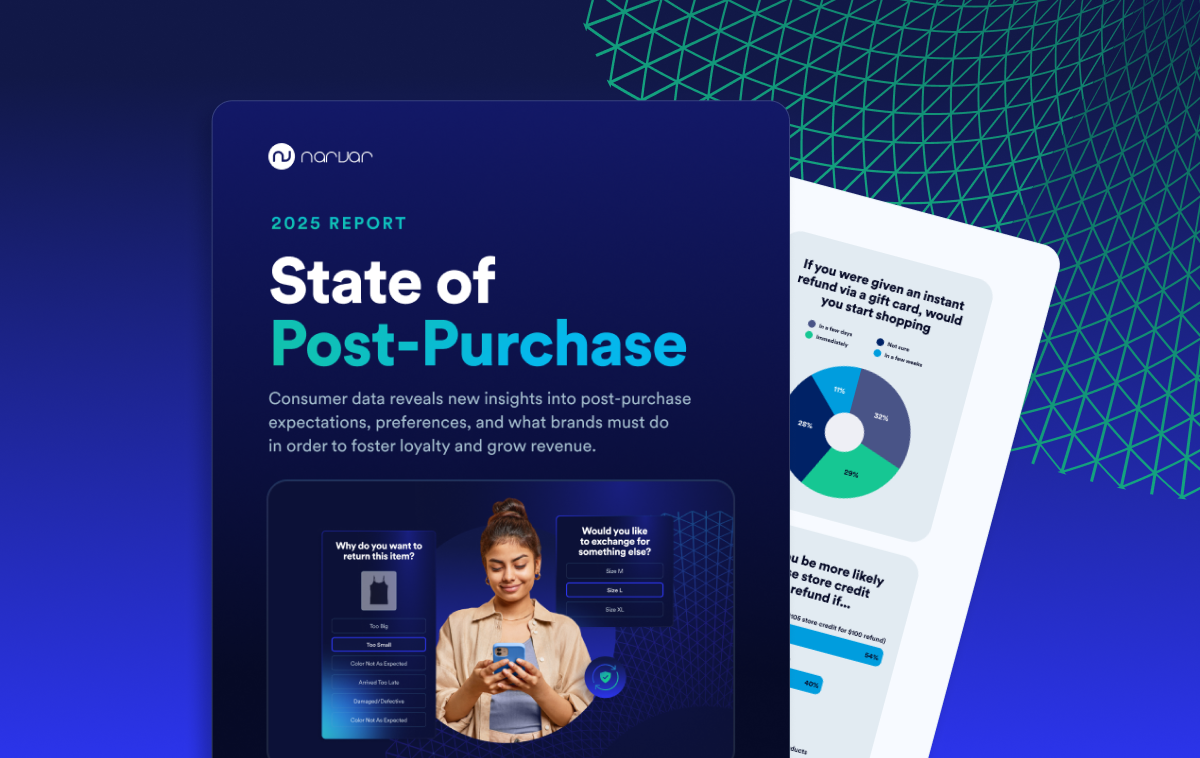
AI-powered delivery date estimates to boost conversion
Give shoppers peace of mind and protect and grow your bottom line
Personalized tracking experiences to build brand loyalty
Returns and exchanges management to mitigate fraud and reward best customers
Proactive communication to drive customer lifetime value
Delivery claim management to tackle fraud and build trust
How to make returns a powerful inventory supplier

In today’s volatile trade environment, where tariffs and supply chain disruptions are constant threats, retailers need to adopt proactive strategies to maintain a competitive edge. The best defense is a good offense, and one of the most overlooked opportunities lies in reverse logistics—leveraging returns as a critical source of sellable inventory.
Location Matters: The Key to Reverse Logistics
The old real estate mantra—location, location, location—applies just as much to supply chain management. For retailers with critical hubs in tariff-impacted regions, optimizing the flow of returned goods can be a game-changer. By refining reverse logistics strategies, retailers can recover inventory faster, reduce costs, and increase availability of high-demand products.
Here are four essential tactics to make returns work in your favor.
1. Diversify Return Shipping Methods
Not all returns are created equal, and neither should be their shipping methods. Enabling a range of return options—such as multiple carriers and varied service levels—allows retailers to prioritize high-velocity products. For example, low-demand items can be shipped back via Economy services, while fast-selling products can be expedited through premium return methods. By strategically managing the return speed, retailers can ensure that the most in-demand inventory is back on shelves and ready for resale as quickly as possible.
2. Route Returns to the Right Location
Efficiency in returns processing isn’t just about speed—it’s about placement. Instead of directing all returns to a single distribution center, retailers should route items to the locations where they’ll sell fastest (or at the highest resale value). Whether it’s a storefront, fulfillment center, or even back to the vendor, intelligent routing minimizes excess handling and ensures that goods re-enter the market swiftly.
3. Implement Multi-Label & Return-to-Vendor (RTV) Strategies
Retailers should use multi-label generation and return-to-vendor (RTV) label generation to direct each return to its most efficient destination. Many e-commerce products are already being shipped from third-party fulfillment hubs during its outbound route, rather than the original seller’s warehouse. The same approach can apply to returns. By allowing certain items to go directly back to manufacturers, drop shippers, or marketplace sellers, retailers can minimize the costs and time associated with handling returns. This strategy ensures that products get back into a sellable state as quickly as possible, maximizing revenue potential.
4. Incentivize Consumers for Faster Returns
One of the biggest hurdles in optimizing returns is consumer behavior—many customers hold onto returns for days before initiating the process. To accelerate inventory recovery, retailers should implement incentives that encourage prompt returns. Offering benefits like free return shipping within a set timeframe or processing refunds to the original payment method only if returned within a few days can create a sense of urgency. These small incentives can significantly improve return cycles, ensuring that inventory is back in rotation faster and reducing the risk of seasonal or trend-based obsolescence.
Strengthening Your Competitive Edge
In an era where tariffs and supply chain volatility create ongoing challenges, retailers who optimize their reverse logistics will gain a decisive advantage. Now is the time to rethink your return supplier network and transform returns into a powerful asset in your inventory strategy. The faster you recover inventory, the stronger your competitive edge—so start executing today.



















.webp)



